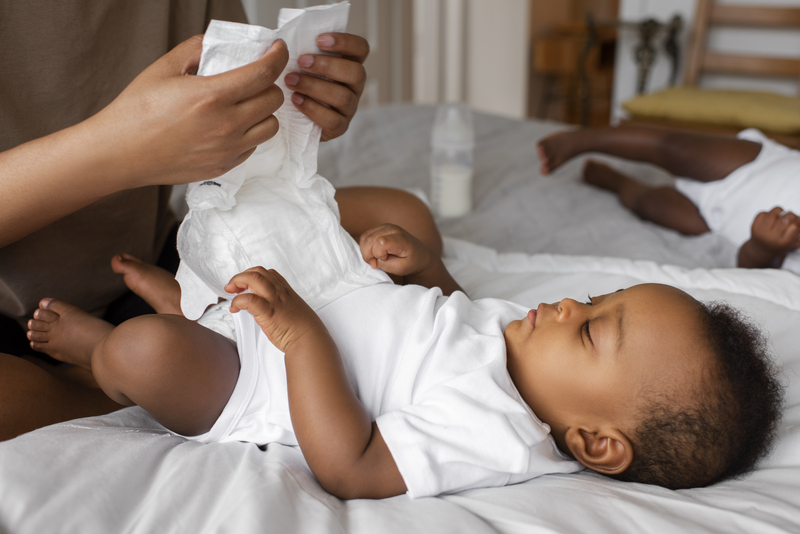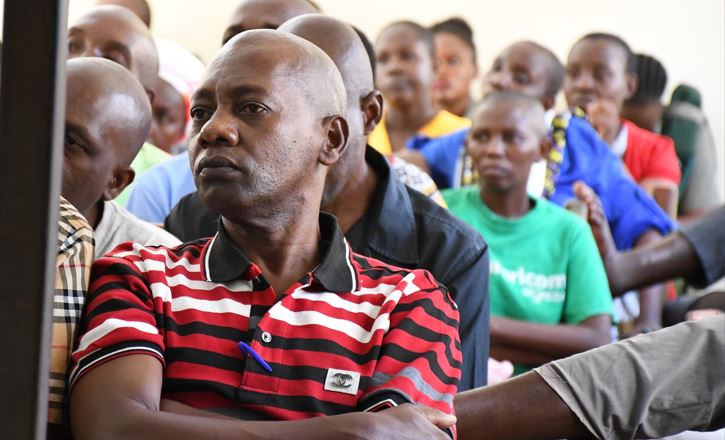Seven reasons why your child’s diaper rash keeps coming back

“Is it the diaper brand? Is my child sensitive? What am I doing wrong?” These are common questions many parents ask when their baby is uncomfortable, making the situation all the more heartbreaking.
For many parents, diaper rash is an all-too-familiar part of early childhood. But when it becomes a recurring issue, the frustration can be overwhelming.
“Is it the diaper brand? Is my child sensitive? What am I doing wrong?” These are common questions many parents ask when their baby is uncomfortable, making the situation all the more heartbreaking.
More To Read
- How to layer beauty products - and why skincare needs more than 10 minutes
- Why some deodorants cost more - and why cheap isn’t always better
- Glow naturally: How to make your own body scrub for radiant, healthy skin
- Kenyan men embrace the glow-up: Grooming gets a masculine makeover
- Born too soon: The crisis of premature births in Kenya
- Why your baby can get a UTI and how to prevent it
Paediatricians report that recurrent diaper rash is one of the most common concerns brought up in check-ups during the first two years of life.
So, what causes diaper rash to keep returning, even after treatment? Here are seven key reasons your child’s diaper rash may be making an unwelcome comeback:
1. Prolonged exposure to wet or soiled diapers
The number one culprit, experts say, is too much time in a dirty or wet diaper. Urine and stool (faeces) contain enzymes and bacteria that break down skin, especially when left in contact with the skin for too long.
“The diaper brand is not a problem, even the most absorbent diapers can’t completely protect the skin if they’re not changed often,” said Dr Lena Patel, a pediatric dermatologist, during an interview with Healthline.
“What parents and caregivers can do is to change diapers promptly, especially after bowel movements or during teething, when stools can become more acidic.”
2. Inadequate cleaning or over-cleaning
Cleaning the diaper area is critical, especially with warm soap and water, but overdoing it or using harsh wipes can cause more harm than good.
“Some wipes have alcohol, fragrance, or other irritants that strip the skin,” Dr Patel said.
”Instead, use gentle, fragrance-free wipes or rinse with warm water. Remember that baby’s skin is delicate, and therefore it is important to pat the skin dry instead of rubbing.”
3. Yeast infections (Candida)
If a rash persists or worsens despite standard creams, a fungal infection could be to blame. Dr Patel says that yeast thrives in moist environments and often develops after antibiotic use.
Signs to watch for: Bright red patches with defined edges, small red dots around the main rash, or involvement in skin folds.
“If this is persistent, it is important to consult your doctor. He or she might give you a prescription, or an over-the-counter antifungal cream may be needed.”
4. Allergic reactions to diapers or products
Some babies react to the very products meant to protect them, such as diaper materials, creams, or laundry detergents used on cloth diapers.
“Before you settle on one brand, try switching diaper brands until you get the one that does not react with the child. You can use cloth diapers, which usually have natural fibres, or opt for hypoallergenic barrier creams.”
5. Frequent diarrhoea or teething
Loose stools caused by teething, diet changes, or illness can cause a rash to return, often more severe than usual.
Dr Patel warns that during these episodes, parents should increase diaper checks during teething phases and apply a thick barrier cream at each change.
6. Not allowing the skin to breathe
Dr Patel warns that parents who put tightly fitted diapers throughout the day or keep the children in diapers prevent air flow, creating the perfect environment for irritation and infection.
“Always allow the child to have a diaper-free time daily. That is why it is important as soon as your child is older, you can begin potty training. Letting the area air out for even 10–15 minutes can help significantly.”
7. Dehydration or insufficient fluid intake
An often-overlooked factor in diaper rash is dehydration, which can make urine more concentrated and irritating to the skin. Dr Patel recommended that breastfeeding mothers increase their water intake, as it improves milk quality and hydration for the baby, especially if they are under six months.
She also emphasised the importance of offering small amounts of water to older infants (6 months and above), especially during hot weather or illness.
“Hydrated babies produce less concentrated urine, which is gentler on their skin,” Dr Patel explained. “Sometimes, all it takes is more fluids to reduce the sting in that diaper.”
8. Underlying skin conditions
In some cases, what appears to be diaper rash may actually be eczema, psoriasis, or another dermatologic condition, which can affect children as well.
“Chronic or unusual rashes that don’t respond to typical treatment should be evaluated by a paediatrician or dermatologist,” said Dr Patel.
“But it is important to see a doctor if your child’s rash is: Persistent or worsening after a few days of home care, Bleeding, oozing, or forming blisters, or if it is accompanied by fever or feeling of vomiting.”
While a diaper rash may be common, it does not have to be constant.
Understanding the root causes and adjusting daily care routines can help keep your baby’s skin healthy and rash-free.
“Prevention is key, because diaper rashes can be uncomfortable for the child,” Dr Patel said. “With the right practices, most diaper rashes can be managed and prevented before they return.”
Top Stories Today













































